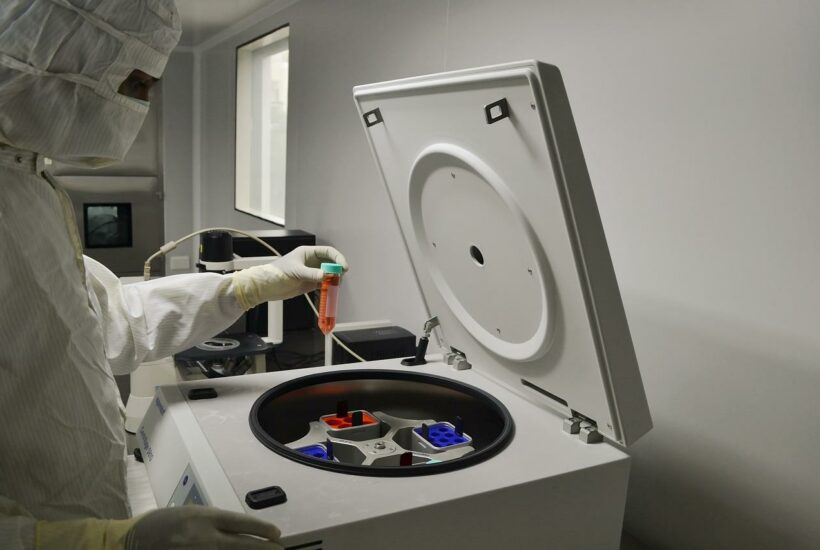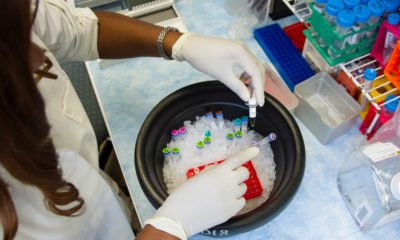Biotech
Biotech Startups Double their Innovative Capacity
PBEs have doubled the number of clinical trials in the last five years, and their success rates are higher than those of their ‘big sisters’, according to this study. They have also increased the number of approval dossiers submitted to regulatory authorities independently. The U.S. drug agency, the FDA, has quadrupled its filings in the last decade, and now has 42% of the products evaluated by this regulator.

New (or emerging) biopharmaceutical companies, defined as those with sales of less than $500 million per year and R&D spending of less than $200 million, are developing 4,000 potential new drugs. Alone, they have their hands on 65% of the total number of new therapies under study. An additional 7% are being developed by large firms, according to IQVIA’s report ‘The contribution of emerging biopharmaceuticals to innovation.’
In 2016, these new companies, (PBEs in the report’s nomenclature) had less than half of the new molecules in development, in 2001 only 31%.
Those based in China account for 17% of all drugs in development, up from only 6% five years ago. Twenty percent are molecules developed by European PBEs, and 46% are based in the United States, but the latter two are less represented than in previous years.
The authors of this document indicate that taking into account the contribution of the PBEs to the research portfolio (pipeline) of their region or country is a way of assessing the maturity of the innovative ecosystem by geographical area. In their analysis, they determine a range of 22% in Japan -the lowest-, 47% in Europe, 62% in the United States, and 83% in China.
39% of oncology drugs in development belong to PBEs (1,500 products in total). There are more than 600 such companies focused exclusively on new cancer therapies, including many with only one drug.
In fact, by therapeutic area, oncology is the focus of most biotech companies. It is followed by infectious diseases and vaccines, and there is less activity in neurology and immunology.
Read more about the success of biotech startups around the globe, and find the most important business headlines of the day with the Born2Invest mobile app. Our companion app is available for free for both Android and iOS devices.
Smaller and more agile
PBEs have doubled the number of clinical trials in the last five years, and their success rates are higher than those of their ‘big sisters’, according to this study. They have also increased the number of approval dossiers submitted to regulatory authorities independently. The U.S. drug agency, the FDA, has quadrupled its filings in the last decade, and now has 42% of the products evaluated by this regulator.
This type of company has funded more than 3,300 studies initiated in 2021, almost twice as many as in 2016.
In addition, PBEs appear to have caught up with agility when it comes to competing with large companies, the report reads. “In total, drugs originated in or marketed by PBSs are more likely to achieve some form of accelerated evaluation, facilitating faster market access.
Although the reduction of development-to-launch times is something shared by large companies and PBEs, the duration of PBE clinical trials is a year behind in time consumed, especially in the fields of oncology and rare diseases.
The authors also point out that trial design is more flexible and more prone to the adoption of new schemes under the baton of the PBEs. Remote, virtual, or decentralized studies increased sharply in 2018, but so did adaptive studies of ‘basket’ and ‘umbrella’ models. This trend is particularly pronounced among EBPs (more than double that of larger companies).
__
(Featured image by satheeshsankaran via Pixabay)
DISCLAIMER: This article was written by a third party contributor and does not reflect the opinion of Born2Invest, its management, staff or its associates. Please review our disclaimer for more information.
This article may include forward-looking statements. These forward-looking statements generally are identified by the words “believe,” “project,” “estimate,” “become,” “plan,” “will,” and similar expressions. These forward-looking statements involve known and unknown risks as well as uncertainties, including those discussed in the following cautionary statements and elsewhere in this article and on this site. Although the Company may believe that its expectations are based on reasonable assumptions, the actual results that the Company may achieve may differ materially from any forward-looking statements, which reflect the opinions of the management of the Company only as of the date hereof. Additionally, please make sure to read these important disclosures.
First published in diariofarma, a third-party contributor translated and adapted the article from the original. In case of discrepancy, the original will prevail.
Although we made reasonable efforts to provide accurate translations, some parts may be incorrect. Born2Invest assumes no responsibility for errors, omissions or ambiguities in the translations provided on this website. Any person or entity relying on translated content does so at their own risk. Born2Invest is not responsible for losses caused by such reliance on the accuracy or reliability of translated information. If you wish to report an error or inaccuracy in the translation, we encourage you to contact us.

-

 Impact Investing1 week ago
Impact Investing1 week agoVernazza Autogru Secures €5M Green Loan to Drive Sustainable Innovation in Heavy Transport
-

 Markets4 days ago
Markets4 days agoRice Market Slips Amid USDA Revisions and Quality Concerns
-

 Business2 weeks ago
Business2 weeks agoLegal Process for Dividing Real Estate Inheritance
-

 Fintech12 hours ago
Fintech12 hours agoJPMorgan’s Data Fees Shake Fintech: PayPal Takes a Hit
























